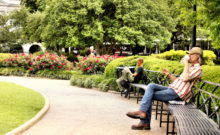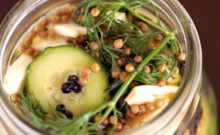There are over 7500 known cultivars of apples. They come in different shapes and sizes and can be grown directly in the ground or in large containers. In addition, many apples are trained as dwarf varieties, some in an espalier format. Fall is one of the best times to be planting an apple tree in your yard. They can be found in many of the larger nurseries and if none are in stock, some will be able to special order one for you.
Apple trees are typically sold as either one or two year old plants. Virtually all apple trees are grafted using a suitable rootstock (the foundation of the plant) and the desired cultivar or variety of apple fruit the tree will produce. When choosing the rootstock, take into consideration the soil type (ex. sandy, loam, clay), the ultimate size of the tree (dwarf, semi dwarf, or regular), as well as the region where the tree will be planted (ex. in a colder or warmer region than the plant nursery).
For the apple cultivar, a popular technique is to include multiple cultivar grafts onto a single rootstock, allowing for more than one variety of apple to be grown. This is great if you want to produce apples for different purposes such as for eating, baking or cider. If you can’t find a suitable variety, it may be worth waiting another year and preordering the tree so that you can get the exact variety you want.
Like most edible plants, apple trees do best when planted in a sunny location with good air flow and good soil drainage. They tolerate a variety of soil conditions, though a pH of 6.0 – 6.5 is ideal for new plantings.
Apple trees do best if another apple variety is grown nearby, or if the plant has multiple cultivars grafted onto the same rootstock. Some apple trees are self fertile, though they will still produce much better and more abundantly if another variety is grown nearby. Ask your neighbours if they would be interested in growing an apple tree if you don’t have the space in your own yard, or see if one is already growing nearby.
All Apple trees are cold hardy and will give you a good bounty of produce for many years to come. Be prepared to feed and prune the tree regularly for best results.
Cover Image by Elliott Brown, used under its Creative Commons license.
[Got a Tip?] If you have a tip to share with your fellow urban farmers, let us know at tips@youngurbanfarmers.com. Want More Tips? Browse our Tips Archive for more.





